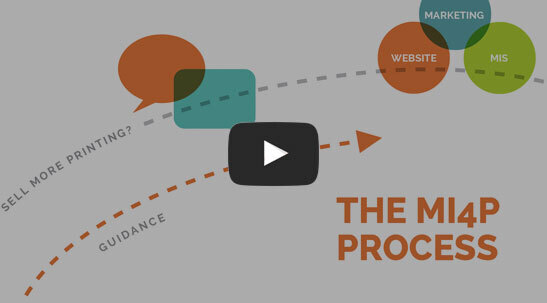If you’re just joining us, so far in this series, we’ve explored:
- Mistake No. 1: Thinking Locally Instead of Globally
- Mistake No. 2: Thinking You’re Just a Printer
- Mistake No. 3: Forgetting the Power of Consistency
- Mistake No. 4: Focusing Too Much on Yourself
Today, we’ll look at how you can put a stop to unintentionally complicating the simple.
It All Starts with a Single Mission
Apple founder Steve Jobs and legendary artist Pablo Picasso shared a common philosophy that we’d all do well to adopt: eliminate the unnecessary.
Jobs used this approach by eliminating buttons, a confusing user interface, and by looking at all complexity with a single mission – to make it simple.
Picasso did the same with his art, even so far as to say,
“Art is the elimination of the unnecessary.”
It’s not uncommon for people to unintentionally complicate things, and this is especially true when it comes to marketing your business.
But, here’s a tip.
There’s one easy way to tell the difference between beginner marketers and well-seasoned marketers, and that’s by the number of fancy words and useless jargon they use.
Seasoned marketers know that simplicity and clarity is the primary objective while beginners are more focused on just trying to make themselves sound smart. More often than not, though, sounding “smart” only leads to a confused audience.
If you can’t easily explain things (as in so simple a seven-year-old knows what you sell and how to order it from you), then you’re more than likely just creating additional questions for your audience.
Yeah, not good.
So, how can you uncomplicate things and bring clarity to your customers? Here are a few things to consider.
Ask Yourself “Could this be more simple?”
The best place to start when working to uncomplicate things is with fresh eyes.
Perspective is a funny thing. It’s why you can stare at the same piece of copy twenty times, print it, and then on the twenty-first time you look at it, you notice that you said “Offered valid” instead of “Offer valid.” (Yep. Been there. Done that.)
Because of this, work to get different perspectives. Listen and learn how other people see things differently and then work to find the easiest route to accommodate the most straightforward perspective.
Bill Gates took this idea to heart by choosing lazy people to accomplish things because as Gates says,
“I choose a lazy person to do a hard job because a lazy person will find an easy way to do it.”
Evaluate your customer’s journey, everything from the initial website visit to order placement to production and final payment and see where things have become too complicated for their own good.
Short and Sweet Can’t Be Beat
The best brand messages are the ones that make you think and inspire you to move ahead.
There’s also a science behind this idea.
George A. Miller, a cognitive psychologist, concluded that people are only able to hold between five and nine objects in their working memory at one time.
Miller’s findings are known as Miller’s Law which is commonly used today in advertising and marketing.
“There’s a reason why the most successful tag lines—“Just do it,” “A diamond is forever,” “Think small,” “I’m lovin’ it”—are rarely longer than a few words. Short phrases are easier to understand in short-term memory, so they have a better chance of being absorbed into long-term memory.”
How well does your messaging adhere to Miller’s Law? Is it more complicated than it needs to be? Now would be a good time to shorten and sweeten it up.
Get Out of Your Own Head
If you want your message to hit home and make a connection with your audience, it comes down to these three words:
Know your customer.
It’s so easy to look at your business, your website, and your products and services as your babies. Because of that, business owners are so often tight-fisted when it comes to hearing feedback or being open to what may truly benefit your business for the better.
If things in your print business are only to your liking or your tastes and preferences, chances are you’ve missed your target.
Instead, get out of your own head and into the shoes of your customers. When you’re putting out any kind of marketing or developing any kind of process for your customers, stop and ask yourself, “What pain point am I solving here for my audience?” “I understand this, but will someone who is looking at this for the first time understand it?” “How would a lazy person approach this to make it easier?”
This is one area where listening to your gut isn’t always best. Think of it this way, if one business owner builds his messaging and brand around what customers have told him work best and another goes by what his gut is telling him, who do think will be more successful in connecting with their audience?
How about you? Are you complicating what could be simple? Perhaps it’s time to see how you can keep it simple with solutions that will help you do just that.



